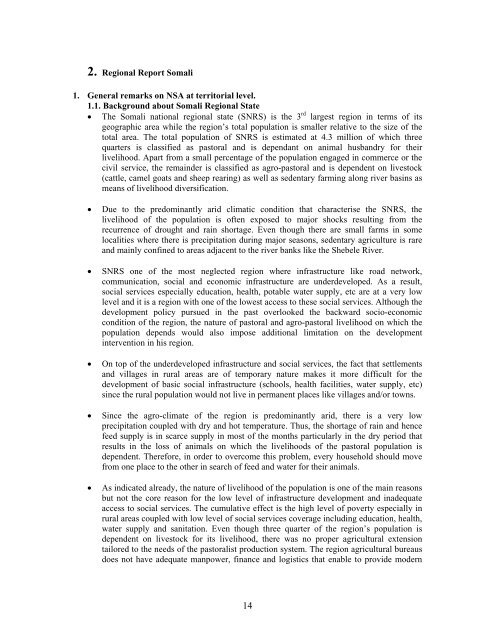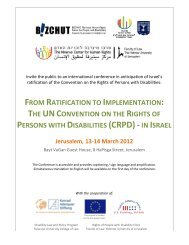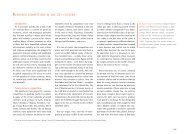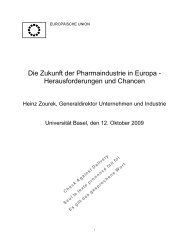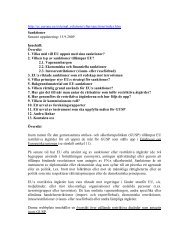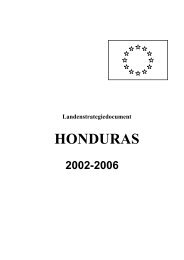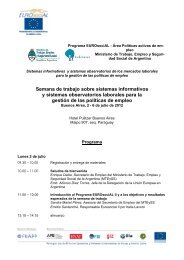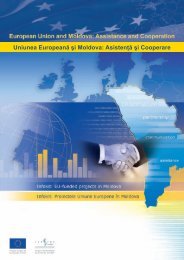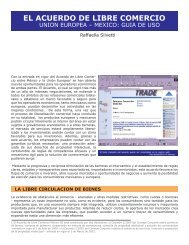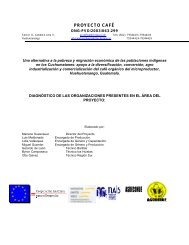Regional Reports - the European External Action Service
Regional Reports - the European External Action Service
Regional Reports - the European External Action Service
Create successful ePaper yourself
Turn your PDF publications into a flip-book with our unique Google optimized e-Paper software.
2. <strong>Regional</strong> Report Somali<br />
1. General remarks on NSA at territorial level.<br />
1.1. Background about Somali <strong>Regional</strong> State<br />
• The Somali national regional state (SNRS) is <strong>the</strong> 3 rd largest region in terms of its<br />
geographic area while <strong>the</strong> region’s total population is smaller relative to <strong>the</strong> size of <strong>the</strong><br />
total area. The total population of SNRS is estimated at 4.3 million of which three<br />
quarters is classified as pastoral and is dependant on animal husbandry for <strong>the</strong>ir<br />
livelihood. Apart from a small percentage of <strong>the</strong> population engaged in commerce or <strong>the</strong><br />
civil service, <strong>the</strong> remainder is classified as agro-pastoral and is dependent on livestock<br />
(cattle, camel goats and sheep rearing) as well as sedentary farming along river basins as<br />
means of livelihood diversification.<br />
• Due to <strong>the</strong> predominantly arid climatic condition that characterise <strong>the</strong> SNRS, <strong>the</strong><br />
livelihood of <strong>the</strong> population is often exposed to major shocks resulting from <strong>the</strong><br />
recurrence of drought and rain shortage. Even though <strong>the</strong>re are small farms in some<br />
localities where <strong>the</strong>re is precipitation during major seasons, sedentary agriculture is rare<br />
and mainly confined to areas adjacent to <strong>the</strong> river banks like <strong>the</strong> Shebele River.<br />
• SNRS one of <strong>the</strong> most neglected region where infrastructure like road network,<br />
communication, social and economic infrastructure are underdeveloped. As a result,<br />
social services especially education, health, potable water supply, etc are at a very low<br />
level and it is a region with one of <strong>the</strong> lowest access to <strong>the</strong>se social services. Although <strong>the</strong><br />
development policy pursued in <strong>the</strong> past overlooked <strong>the</strong> backward socio-economic<br />
condition of <strong>the</strong> region, <strong>the</strong> nature of pastoral and agro-pastoral livelihood on which <strong>the</strong><br />
population depends would also impose additional limitation on <strong>the</strong> development<br />
intervention in his region.<br />
• On top of <strong>the</strong> underdeveloped infrastructure and social services, <strong>the</strong> fact that settlements<br />
and villages in rural areas are of temporary nature makes it more difficult for <strong>the</strong><br />
development of basic social infrastructure (schools, health facilities, water supply, etc)<br />
since <strong>the</strong> rural population would not live in permanent places like villages and/or towns.<br />
• Since <strong>the</strong> agro-climate of <strong>the</strong> region is predominantly arid, <strong>the</strong>re is a very low<br />
precipitation coupled with dry and hot temperature. Thus, <strong>the</strong> shortage of rain and hence<br />
feed supply is in scarce supply in most of <strong>the</strong> months particularly in <strong>the</strong> dry period that<br />
results in <strong>the</strong> loss of animals on which <strong>the</strong> livelihoods of <strong>the</strong> pastoral population is<br />
dependent. Therefore, in order to overcome this problem, every household should move<br />
from one place to <strong>the</strong> o<strong>the</strong>r in search of feed and water for <strong>the</strong>ir animals.<br />
• As indicated already, <strong>the</strong> nature of livelihood of <strong>the</strong> population is one of <strong>the</strong> main reasons<br />
but not <strong>the</strong> core reason for <strong>the</strong> low level of infrastructure development and inadequate<br />
access to social services. The cumulative effect is <strong>the</strong> high level of poverty especially in<br />
rural areas coupled with low level of social services coverage including education, health,<br />
water supply and sanitation. Even though three quarter of <strong>the</strong> region’s population is<br />
dependent on livestock for its livelihood, <strong>the</strong>re was no proper agricultural extension<br />
tailored to <strong>the</strong> needs of <strong>the</strong> pastoralist production system. The region agricultural bureaus<br />
does not have adequate manpower, finance and logistics that enable to provide modern<br />
14


